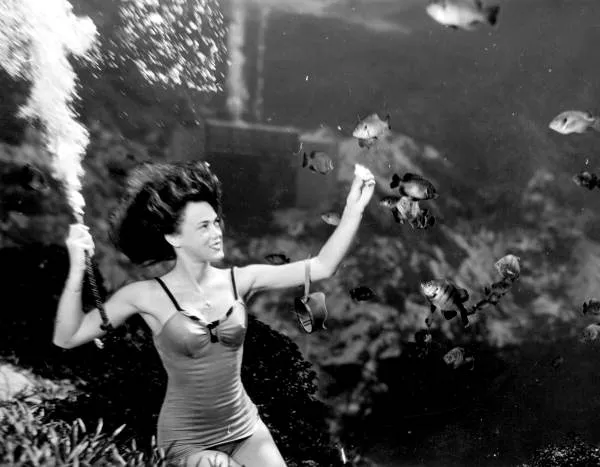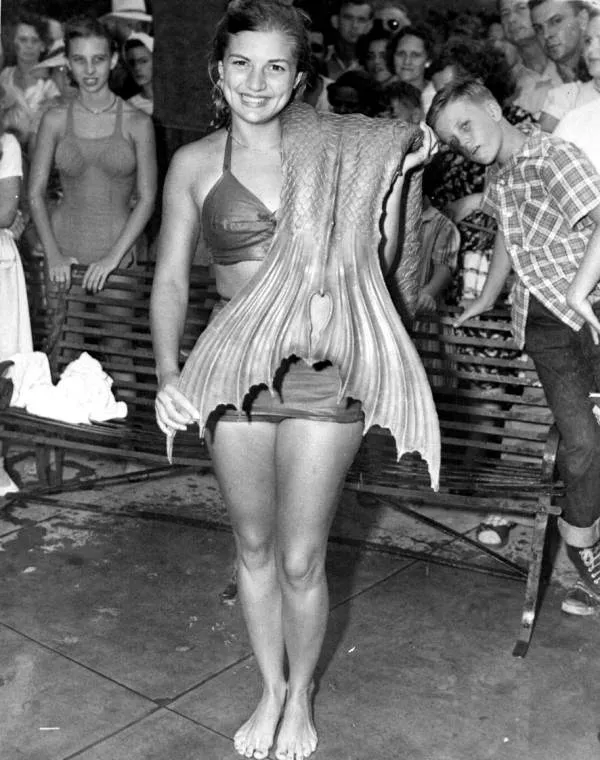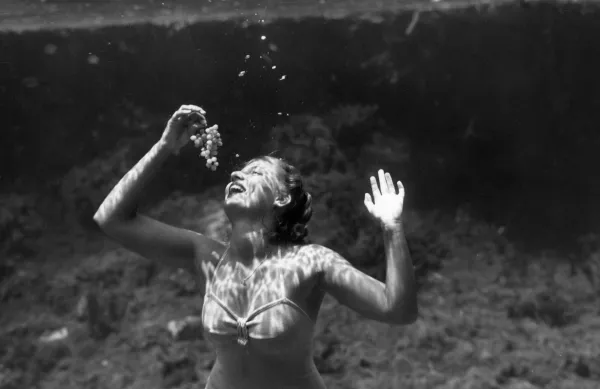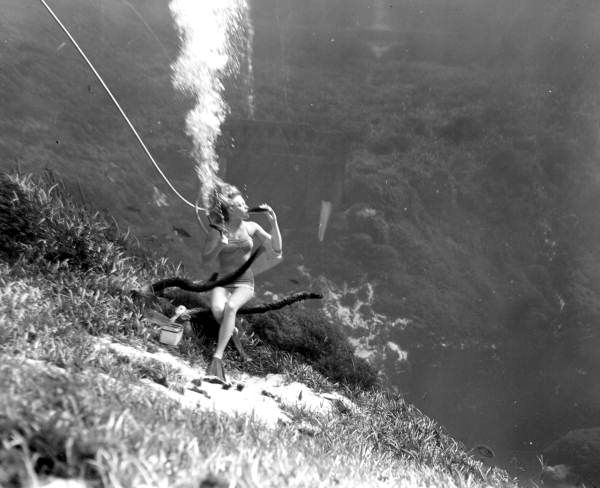The Historic Tail of the Weeki Wachee Mermaids
You can even learn to “mermaid” yourself, if the fancy takes you
/https://tf-cmsv2-smithsonianmag-media.s3.amazonaws.com/filer/81/7c/817cd2be-bf51-43bf-a2e2-fa12db0c11b4/6636938629_3a22acc6f3_o.jpg)
Disney's The Little Mermaid opened on this day in 1989. It inspired a generation of young girls to dream of being mermaids. What they may not have known is that there is a place where athletic women have masqueraded as mermaids to perform underwater tricks and stunts for seventy years. The mermaids of Weeki Wachee Springs State Park are a Florida landmark: Today, they even run a camp to teach others the art of "mermaiding."
"Weeki Wachee looks like countless sleepy Florida towns, except for one noteworthy difference," writes Luke Johnson for Mashable: "it has more mermaids than humans." Dating back to their first show in October 1947, women performing as mermaids in Weeki Wachee Spring have entranced visitors. Today, they're never seen in the water without their tails, but in the early days of the show, "mermaids" often performed in nothing but a swimsuit and flippers. They entertained visitors by doing tricks and interacting with the fish and other inhabitants of the carefully arranged spring.

In the early days, writes Virginia Sole-Smith for The New York Times Magazine, proprietor Newt Perry didn't compensate the women who performed in the spring with money. "They worked in exchange for meals, free swimsuits... and glory," she writes. The show remained a roadside attraction like many others until 1959, when it was puchased by the American Broadcasting Company.

After 1959, writes Sole-Smith, performers started being paid–although they had to pay some of that back to live in the mermaid dorms. "The next decade or so was Weeki Wachee's heyday," she writes, "when the cast put on nine shows a day." Given that they were owned by ABC, it's unsurprising that they also appeared in a number of filmed specials.
Most of the mermaid performers were local women, although applicants for the mermaid program came from as far as Tokyo in the 1960s, according to official history. The 35 mermaids who swam in shows during this time were known for "captivating the crowds by playing football and having picnics underwater," it reads.

After Walt Disney World came to nearby Orlando in 1971, writes Sole-Smith, Weeki Wachee couldn't compete. But the tiny "city" (which has a population of four people) has managed to keep the show going. It became a state park in 2008, and today even runs mermaid camps. You can watch hours of mermaid footage on a more modern broadcasting channel, Youtube.
"Performing in the park's mermaid show is something like synchronized freediving with your legs tied together and weighed down inside a lycra cocoon," writes Jessica Glenza for The Guardian. Braving dangers like water moccasins in the spring, "many professional mermaids can hold their breath upwards of four minutes," she writes. The mermaids of Weeki Wachee perform "ballet-like choreography" in 74-degree water during their half hour shows.
Being a mermaid is serious business, she writes, but it has rewards.
With the help of the oxygen tubes, the mermaids are able to remain underwater for many times what they would naturally be able to achieve. Their experience of the Spring is unhindered by bulky breathing apparatuses, enabling them to look like they belong there–magic indeed.


